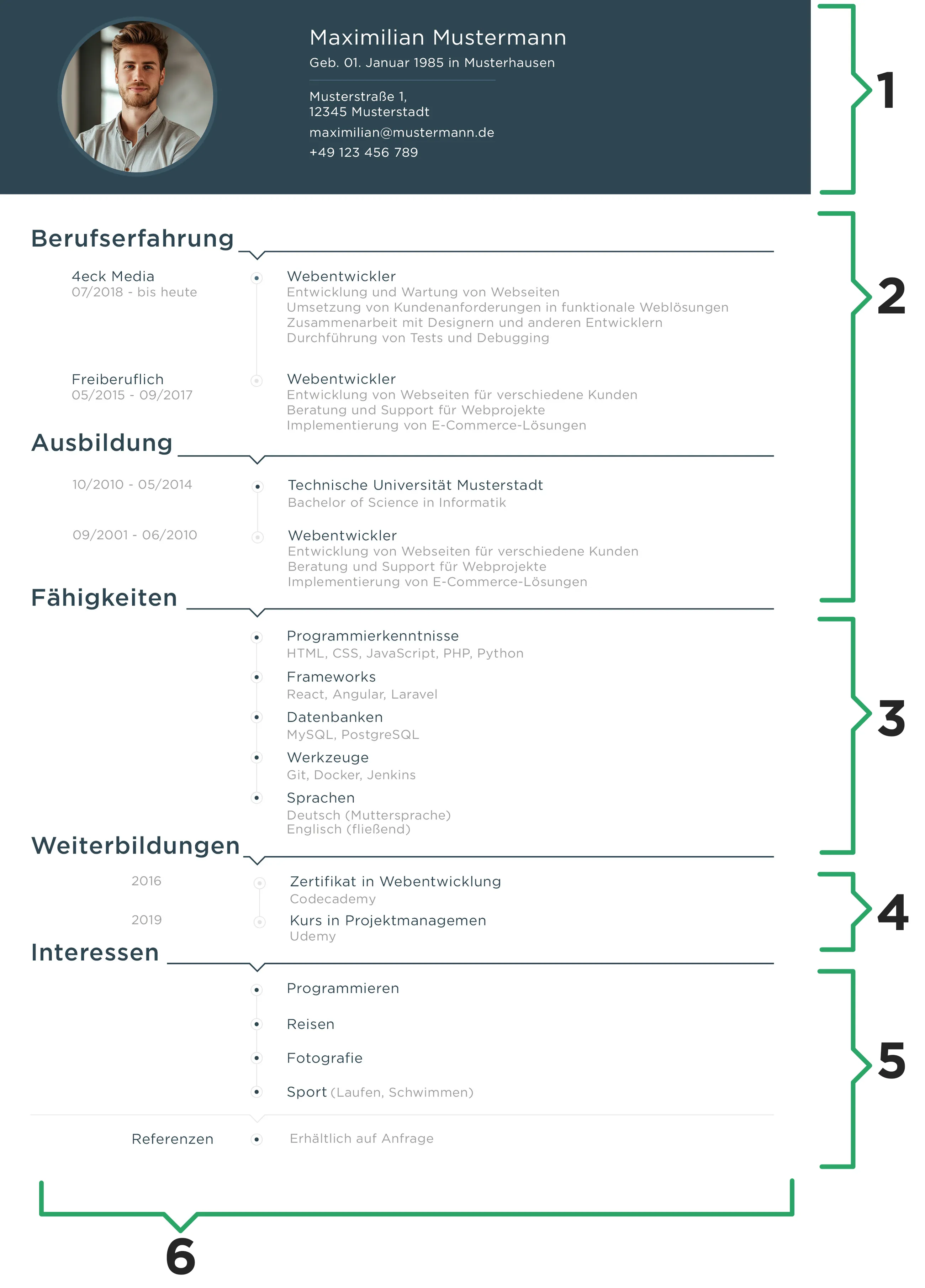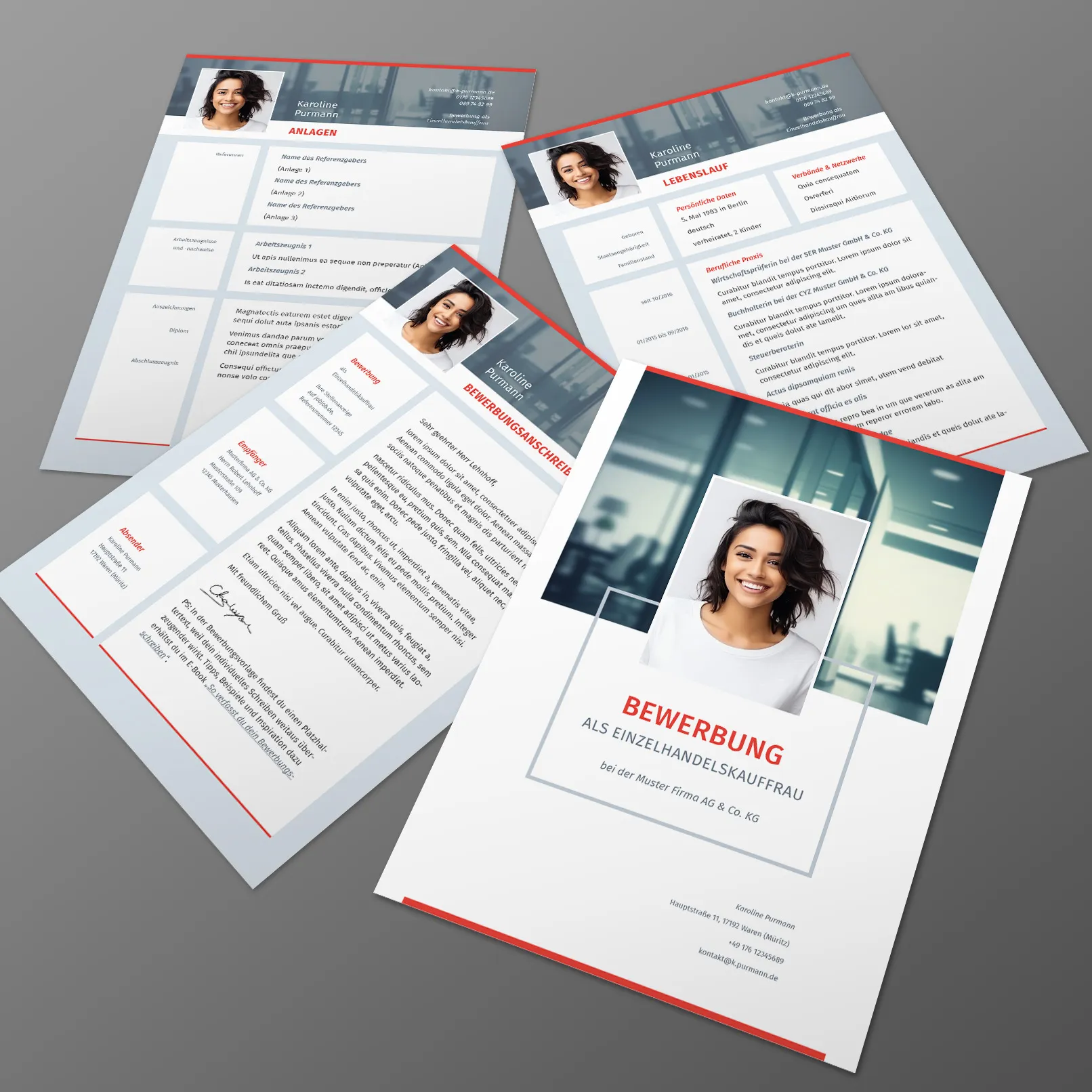Germany is one of the largest and most competitive market economies in the world. To get an attractive job with a sought-after company here, every applicant has to stand out from hundreds or even thousands of other applicants. In this context, the CV is a career passport, a key to the door of opportunity. It must be of high quality, simple and clear, because the CV decides whether you are invited to an interview.

Never created a CV yourselfbefore ? Don't worry! TutKit.com takes care of everything. Our templates and guides will help you create a resume that will catch the employer's eye.
How can you stand out from the crowd and attract the attention of employers? In this article, I will share with you the tricks of successful CV writing that will position you professionally and desirably and increase your chances of getting the result you want. Don't waste your time with random attempts, because I will give you concrete tips and practical advice that will help you stand out in the job market.
Objectives and tasks of the CV
No matter what job you are applying for. Your CV should fulfill 3 main functions:
- Draw the recruiter's attention to your application.
- Arouse interest in your skills and competencies.
- Make the hiring manager want to invite you for an interview because they want to get to know you.
If you get a call back to arrange an interview after your first application, 99% of the time your CV will be fine. However, if you don't get a call back after several attempts, you should finish reading this article. Because then you clearly need to take action.
How do I create a CV?
Before you start writing your CV, you should answer the following questions honestly:
- Why am I applying for this job?
- Why did I choose this company?
- Why does my profile match the advertised position?
- What does the company gain from hiring me?
This way, you will not only find out what information you need to include in your CV, but you can also tailor it to the company's requirements for the advertised position.
Structure of the CV
Together with the cover sheet and cover letter, a good CV should not only make a good impression on the recruiter, but also convey all relevant information in a high-quality manner.
Anonymous surveys conducted among recruiters in early 2024 revealed disappointing results for job seekers. The larger the company and the more applicants submitted their CVs for a job, the less time recruiters spent reviewing them, according to the results. On average, the time spent on the review is between 30 seconds and 1.5 minutes. In this short time, you need to manage to impress the potential employer, or at least grab their attention, in order to progress to the next stage of the selection process where applicants are scrutinized in more detail.
With this in mind, the correct structure of the CV becomes increasingly important. Whereas in the past it could be written in any style, today it is considered good form to write a CV in tabular form, in which all information is clearly structured and presented without overloading. It is not necessary to write about the composition of the family (spouse, children, parents, siblings) and the place of birth. Such a presentation is a thing of the past, as the really important and interesting data for the employer can get lost among this information.
Are you a competent expert? Then your CV must be perfect, because a professional form makes the content shine all the more! TutKit.com offers you a wide range of templates for different professions that you can use to highlight your strengths and experience.
The standard structure of an effective CV

- Personal details
- Professional specialization and education
- Knowledge and skills
- Further training
- Interests and hobbies
- No more than two pages
According to the vast majority of recruiters who regularly recruit, the standard CV consists of the following elements:
Contact details (Personal details):
- First and last name.
- Address of place of residence.
- Telephone number.
- E-mail address.
- Date of birth.
Professional experience:
- Name of the company or organization.
- The position you held.
- Duration of employment (start and end date).
- Description of duties and accomplishments in each position.
Education:
- Name and location of educational institution.
- Qualification completed (diploma, degree).
- Years of study (start and end).
- Description of key courses or specializations that were important to the applicant's career.
Skills (knowledge and abilities):
The programming languages you know.
Specialized applications or tools you are familiar with.
Soft skills (communication, leadership, time management, etc.).
Languages:
The level of language proficiency in each language (A1, A2, B1, B2, C1, C2) according to the CEFR scale.
References to certificates or exams of language competence, if available.
Additional information:
Additional skills or qualifications that could be important for your career in the job.
Hobbies or interests that you can list if they are relevant to the job.
Structure your CV briefly and logically, highlighting the most important aspects of your experience and qualifications. Express yourself clearly and consistently to present yourself as openly and attractively as possible to a potential employer.
Content of the individual sections
If you look at the structure of successful applicants' CVs, you will notice that each section reflects the most important aspects of their professional and personal identity. If the content is well formulated, you can present your experience, skills and achievements to a potential employer as effectively as possible. Therefore, make sure that each section of the CV is structured according to modern standards. Modern standards have nothing to do with the applications you covered at school. These were prepared by teachers who have never really had to apply seriously in life, nor have they ever hired anyone on the basis of a large number of applications. Pay particular attention to clarity, conciseness and logical consistency. To help you better understand what information should be included where and how best to structure it, I'll now go into more detail.

Contact details
Here you should include up-to-date information, including your phone number, your home address or the best way to contact you, and your email address. If available, you can also include links to your website and social media, such as your LinkedIn account.
A high-quality, business-style photo of yourself can introduce this section. Make sure that the photo does not have too much presence and that it is placed in good quality. It must also be of high quality after printing if you want to print the document. Although a photo is not mandatory, experience has shown that CVs from German companies increase the chances of applicants reaching the next stage of the selection process - as long as the image is not of poor quality.
Work experience
In this section, you should describe your previous jobs in detail, including start and end dates, name of the company, duties and achievements. For time periods, you should include months as well as years.
Achievements expressed in numbers can reinforce the points in this section. For example, your contribution to growing the turnover of the online store you manage by 70 %. It is important that you tell the truth, as a potential employer can always verify this information at your previous job.
Education
You should list your educational institutions in chronological order and include the date of graduation, degrees and relevant courses. If you received good grades and certificates during your studies, you can also list these or post links to them. Do not mention any educational institutions that you did not attend or from which you were excluded due to failure.
Skills: Knowledge and abilities
List technical, language and social skills that are relevant to the job. You don't have to list them all, but you should be aware that if you are applying for a job as a programmer, your employer is probably not interested in you being able to paint walls quickly. The best way to find out what skills are important for a particular job is to consider the requirements of the position. Make it clear how your skills can help a particular company.
Languages
State the exact level of your language skills (A1, A2, B1, B2, C1, C2) according to the CEFR scale. Sometimes employers will interview you in one of the languages listed on your CV, especially if the position requires it.
Additional information
Include any relevant information, e.g. publications, voluntary work, awards. Participation in related projects may also be of interest to your desired employer.
Tips for customizing your CV
Collecting all the necessary information and structuring it well is not enough to make your CV stand out from the crowd. It is important to choose the right design and adapt it to your own needs. Follow these guidelines.

10 tips for a good CV
- If you don't have the necessary knowledge and skills in graphic design, it's better to download ready-made templates for your CV. You can do this on our TutKit.com portal, for example. With the application templates presented here, you can easily place all the necessary information, design it in the desired colors and add your own images, photos and navigation icons. These are easily customizable for you and guarantee a modern quality that is certainly better than most of your competitors.
- It's important that you don't include any false information on your CV, as employers can check it at any time, especially if they like your application.
- Whether it's about your studies or your professional activities, try not to leave any gaps. If you do, it is better to describe the reasons for this - this could be illness, a sabbatical year or other insurmountable circumstances. By talking about it and explaining how you have benefited from this time in terms of your career progression, you will build additional trust in yourself.
- The dates on your CV should form a clear chronological order of events for the employer.
- After you have provided your full contact details, the next block should be your work experience. For many companies, it may not matter what level of education you have or what team building courses you have attended.
- Back up your experience with facts and figures. When the employer sees your achievements, they can translate them to their goals, which increases your chances. Remember that most employers like to see success in concrete numbers. Of course, it's not about including graphs, but it's always helpful to describe your achievements in percentages.
- Remember that the font should be as easy to read and understand as possible. No one is interested in elaborate letterforms, especially if they interfere with quickly reading the necessary information. Nevertheless, avoid the usual standard fonts such as Times New Roman, Arial, Verdana or Calibri. Try Raleway, Roboto, Lato Sans or other professional and modern fonts that you can download for free from Google Fonts.
- After you've written your resume, set it aside for a few hours or until the next morning. Check it again for logical consistency and grammatical errors. The latter can significantly tarnish the impression and make you appear incompetent in basic matters. Ask your family and friends to read through it again and ask them if they think it is comprehensible.
- Sign your resume with a blue pen or ink. If you want to submit your resume via email, scan your signature and paste it into the document. Signing with a blue pen is most effective!
- Give all the information that is relevant to the position more space in your application. Anything else that has happened in your life but is less relevant to the job should be shortened. Your CV should be no longer than two pages.
Getting ready for your dream job? TutKit.com makes creating a professional resume a breeze! Our ready-made, professional resume templates will help you stand out from the competition and make a lasting impression on your employer. With TutKit.com, your resume won't just be a resume, but a real calling card of your success!
How to write a CV better than the competition
From Vitalii Shynakov
